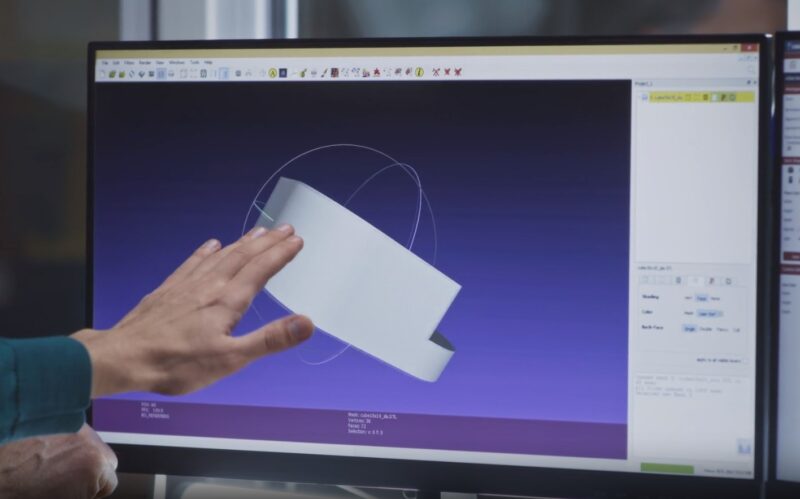Kinematics is a fascinating and fundamental branch of physics, focusing on the motion of objects without considering the forces causing that motion. This field breaks down the concepts of velocity, acceleration, and displacement, which are essential for understanding the mechanics of everyday objects and sophisticated engineering systems.
Today, we will explore the details of kinematics, its principles, applications, and impact on our knowledge of the physical world.
The Essence of Kinematics
Kinematics is a cornerstone of classical mechanics. It involves studying objects in motion, analyzing parameters like velocity, acceleration, and displacement.
Unlike dynamics, kinematics doesn’t consider the causes of motion, such as forces or energy, making it a purely descriptive branch of physics.
- Velocity: Describes the speed and direction of an object.
- Acceleration: Indicates the rate of change of velocity.
- Displacement: Measures the change in position of an object.
Understanding these parameters helps in predicting an object’s future position and velocity, given its current state. This prediction capability is crucial in fields ranging from engineering to astronomy. Having knowledge about kinematics can be highly useful in engineering, the same as power dynamics.
The Role of Equations in Kinematics
Kinematic equations are vital tools used to describe motion. These equations connect the primary parameters of motion – displacement, velocity, acceleration, and time. There are generally four kinematic equations, each serving a different purpose, but all are crucial for solving motion-related problems.
- Equation 1: Connects velocity, acceleration, and time.
- Equation 2: Links displacement, initial velocity, time, and acceleration.
- Equation 3: Associates displacement with velocity and time.
- Equation 4: Relates displacement, initial and final velocity, and acceleration.
These equations are applicable under constant acceleration conditions, a common scenario in many practical situations.
Graphical Representation of Motion
Graphs play a significant role in kinematics, offering a visual representation of motion. Position-time, velocity-time, and acceleration-time graphs are commonly used.
- Position-Time Graphs: Display the change in position of an object over time.
- Velocity-Time Graphs: Illustrate how velocity changes with time.
- Acceleration-Time Graphs: Show the variation of acceleration over time.
These graphical tools aid in comprehending complex motion scenarios and provide a clearer understanding of the relationships between different kinematic variables.
Advanced Concepts
In kinematics, the concept of relative motion is pivotal. It involves analyzing the motion of an object as observed from different reference frames. A reference frame is a point of view from which motion is observed and measured, often defined by an observer’s position and state of motion.
- Importance: Understanding relative motion is crucial in scenarios where multiple objects are moving in different ways. It helps in analyzing how the motion of one object appears from the perspective of another.
- Examples: Everyday examples include observing a moving train from the platform or another train.
Projectile Motion
Projectile motion is a classic example of two-dimensional kinematics. It involves objects moving under the influence of gravity, typically following a curved trajectory. The motion is characterized by a horizontal velocity component (unchanged) and a vertical velocity component (affected by gravity).
- Applications: Projectile motion principles are essential in sports, ballistics, and even space travel.
- Analysis: Kinematic equations are used to predict the range, maximum height, and time of flight of a projectile.
Circular Motion
Circular motion, another aspect of kinematics, deals with objects moving in a circular path. It’s characterized by a constant speed but changing velocity (due to direction change), leading to the concept of centripetal acceleration.
- Relevance: This concept is vital in understanding phenomena in amusement park rides, planetary motion, and machinery with rotating parts.
- Analysis Techniques: The analysis involves understanding the forces causing the circular motion, although kinematics alone only describes the motion without digging into these forces.
Applications of Kinematics

In engineering and robotics, kinematics is fundamental. It helps in designing and controlling mechanical systems, like robotic arms, vehicles, and machinery.
- Design: Kinematics aids in understanding how different parts of a machine will move relative to each other.
- Control: In robotics, kinematic equations are used to control the motion of robots, ensuring precise movements.
Sports Science
In sports science, kinematics is used to analyze athletes’ movements, helping to enhance performance and reduce injury risks.
- Performance Optimization: Coaches and trainers use kinematic data to refine techniques, such as a sprinter’s stride or a swimmer’s stroke.
- Injury Prevention: Having knowledge about the mechanics of movements helps in identifying and modifying actions that might lead to injuries.
Astronomy and Space Exploration
Kinematics also finds significant applications in astronomy and space exploration. It is used to track and predict the motion of celestial bodies.
- Orbital Mechanics: Kinematics helps in understanding the orbits of planets, moons, and artificial satellites.
- Space Missions: Accurate kinematic models are essential for navigating spacecraft and planning missions.
Challenges and Limitations

While kinematics provides a robust framework for understanding motion, it faces challenges in dealing with non-linear motion, where acceleration is not constant.
- Complex Scenarios: Situations like varying gravitational fields or air resistance introduce complexities that standard kinematic equations cannot easily address.
- Solution Approaches: Advanced mathematical methods and computer simulations are often employed to tackle these challenges.
Integration with Dynamics
Kinematics is limited in that it doesn’t account for the forces causing motion. Integrating kinematics with dynamics, the study of forces and motion, is crucial for a complete understanding.
- Importance of Dynamics: Dynamics provides the ‘why’ behind the motion, explaining the causes behind the kinematic patterns observed.
- Comprehensive Analysis: Combining kinematics with dynamics allows for a more thorough analysis of physical systems, from simple machines to complex natural phenomena.
Technological Limitations
Technological limitations can hinder the accuracy and scope of kinematic analysis.
- Measurement Precision: Accurately measuring kinematic quantities like velocity and acceleration requires sophisticated instruments, especially at very high speeds or in microscale environments.
- Data Processing: The vast amounts of data generated in detailed kinematic studies necessitate robust data processing and analysis tools.
What to Expect in the Future

Technological advancements are continually enhancing the precision and capabilities of kinematic analysis.
- High-Speed Cameras and Sensors: These technologies allow for more accurate and detailed motion tracking.
- Computer Simulations: Advanced simulations enable the exploration of kinematic scenarios that are difficult to study in real life.
Interdisciplinary Applications
Kinematics is increasingly being applied in interdisciplinary contexts, blending with other fields to solve complex problems.
- Biomechanics: Combining kinematics with biology to understand the motion of living organisms.
- Environmental Studies: Using kinematics to model and predict phenomena like ocean currents and wind patterns.
Educational Implications
Kinematics plays a crucial role in education, forming a foundational aspect of physics and engineering curricula.
- Teaching Concepts: It provides a tangible way for students to grasp fundamental physics concepts.
- Inspiring Innovation: Understanding kinematics can inspire innovative solutions in design, technology, and various scientific fields.
The Expansion in Modern Technology

As we dig deeper into the 21st century, the relevance of kinematics in modern technology is becoming increasingly prominent. Its principles are being employed in cutting-edge fields such as autonomous vehicles, virtual reality (VR), and artificial intelligence (AI).
- Autonomous Vehicles: Kinematics is crucial in the development of self-driving cars, where understanding motion and predicting trajectories are vital for safety and efficiency.
- Virtual Reality: In VR, kinematic principles are used to create realistic and immersive environments, simulating physical movements in a virtual space.
- Artificial Intelligence: AI systems often use kinematic models to better understand and predict physical phenomena in various applications.
Global Impact and Environmental Considerations
Kinematics also plays a significant role in addressing global challenges, particularly in environmental conservation and sustainable development.
- Renewable Energy Systems: Kinematic studies contribute to the design and optimization of wind turbines and hydroelectric systems.
- Climate Change Research: Understanding the kinematics of atmospheric and oceanic flows is essential in climate modeling and predicting weather patterns.
Challenges in Education and Public Perception
Despite its importance, kinematics often faces challenges in education and public perception, mainly due to its abstract nature and complexity.
- Educational Challenges: Making kinematics accessible and engaging for students can be challenging, requiring innovative teaching methods and practical applications.
- Public Understanding: There’s a need to bridge the gap between the scientific community and the public in understanding the implications of kinematics in everyday life.
FAQs
Can kinematics be applied to objects moving at very high speeds, close to the speed of light?
No, kinematics in classical physics is not applicable at speeds close to the speed of light. At these velocities, relativistic effects become significant, and Einstein’s theory of relativity must be used instead.
How does kinematics differ from kinetics in physics?
Kinematics focuses on describing the motion of objects without considering the forces causing the motion. Kinetics, on the other hand, involves the study of forces acting on a body and the resulting motion.
Is it possible to use kinematics in analyzing motion in a vacuum?
Yes, kinematics can be used to analyze motion in a vacuum. In fact, the absence of air resistance simplifies the kinematic analysis, as it removes a variable that can alter an object’s trajectory.
Are kinematic equations applicable in non-inertial frames of reference?
No, standard kinematic equations are formulated for inertial frames of reference, where the observer is either at rest or moving with constant velocity. In non-inertial frames, additional forces and considerations come into play.
How does kinematics contribute to advancements in robotics?
In robotics, it is used to design and control the motion of robotic parts. It helps in calculating the positions, velocities, and accelerations of various components, ensuring precise and efficient movements.
Can kinematics be used to predict future positions of celestial bodies?
Yes, it is used in astronomy to predict the future positions of celestial bodies. By understanding their current motion patterns, astronomers can forecast their future positions and movements.
Final Words
Kinematics is a vital and dynamic field of study, offering insights into the motion of objects that are integral to numerous aspects of science and everyday life. From engineering marvels to the simple act of throwing a ball, kinematics provides the tools to describe and analyze motion in a clear and precise manner.
As technology advances, so too will our understanding and application of kinematic principles, continuing to shape the world in profound ways.
